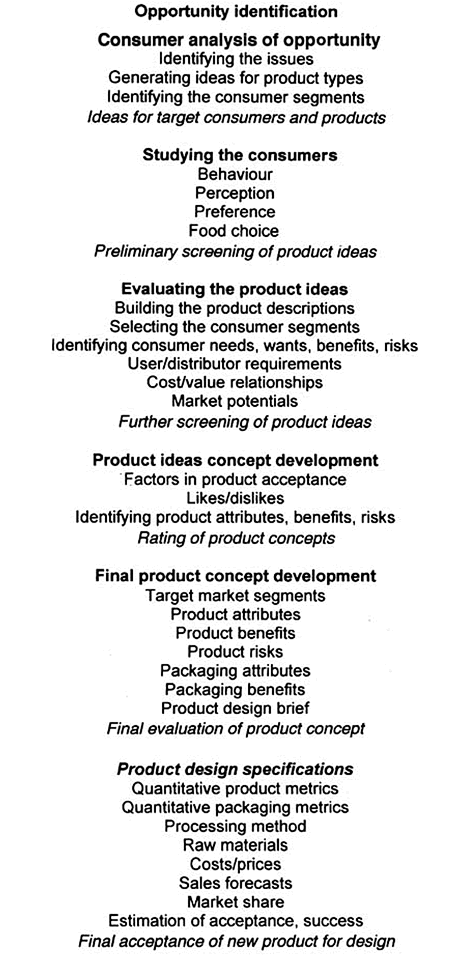FOOD
PRODUCT DEVELOPMENT
Mary Earle, Richard Earle and Allan Anderson |
| Loading
|
Product strategy development |
|
||||
|
|
|
Part
2, Chapter 5
The consumer in product development 5.6 Consumers in Stage 1: Product strategy development In developing the product strategy, there are seven steps (Linnemann
et al., 1999):
1. Analysis of socioeconomic development in the target markets. 2. Translation of consumer preferences and perceptions into consumer categories. 3. Translation of consumer categories into product assortments. 4. Grouping of product assortments in product groups in different stages of the food supply chain. 5. Identification of processing technologies relevant for specific product groups. 6. Analysis of the state of the art in relevant processing technologies. 7. Matching the state of the art of specified processing technologies with future needs. This study sets up a new product strategy based on the consumers. As Linnemann et al. stated, the beginning is a study of consumer trends. For example, is the life style of consumers changing? What are the trends in food buying? How are their economic standards changing? This gives the background to the choice of new product areas. In category appraisal, consumers study the company's and competing products in a product category to investigate the acceptance and standing of the company's products against competitors. Product prototypes can also be studied with the commercial products. Consumers can describe their concepts of the products, and the key product attributes leading to consumer acceptance. They can give opinions on their 'ideal' products. From this information, opportunities for new products in the category can be identified. It may also lead to changes in positioning of the company's products. After the product strategy development, the consumers need to be involved in the generation of product ideas, screening of product ideas, development of the product concept and finally the product design specifications, so that their needs and wants are brought into the product concept which is the basis of product design, as shown in Fig. 5.9.  Fig. 5.9 Some consumer activities in Stage 1: Developing the product strategy. The activities in Fig. 5.9 show the importance of the consumer involvement in Stage 1 of the PD Process, which lays the basis for the product development project. The most important activities are product idea generation and screening, consumer survey, product concept development, product acceptance predictions and development of the product design specifications. |
|
 |